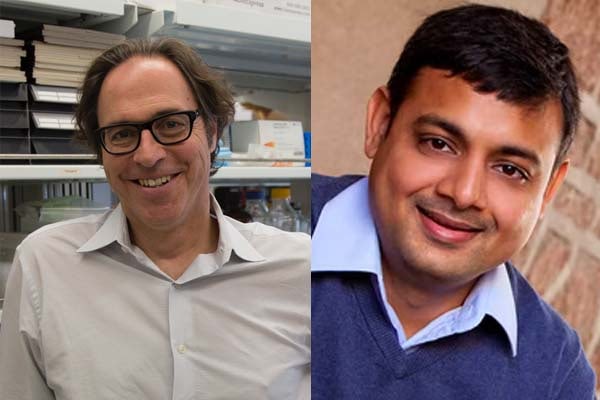Longmore, Pathak to study leader cells in breast cancer model
Work combines expertise of medicine, engineering

Breast cancer is the second most common cancer in women in the U.S. and the second leading cause of cancer death, which typically results from its spread to other areas in the body. The tumor cells form into clusters, which are led by leader cells into other parts of the body, but researchers are not sure why or how these cells develop.
Gregory D. Longmore, professor of medicine, and Amit Pathak, associate professor of mechanical engineering & materials science, both at Washington University in St. Louis, will study the cells that lead the collective migration of deadly tumor cells through the body with a five-year, $2.54 million grant from the National Institutes of Health.
To study these cells, they will use novel microfluidic devices and agent-based computational models to study the movement of these groups of cells, which stay connected as they travel, and how they respond to different environmental signals. They will use breast tumor organoids, which are 3D organ-like cell cultures derived directly from primary breast tumors in mice, to determine how these leader cells develop, move, function and migrate to the leading edge of the tumor cluster.
By combining devices, theory, modeling, and cancer biology, their goals are to determine how these leader cells in breast tumor organoids move to the leading edge of the clusters and direct the movement of the cells as well as to understand the feedback between these invaders and remodeling of tissue



